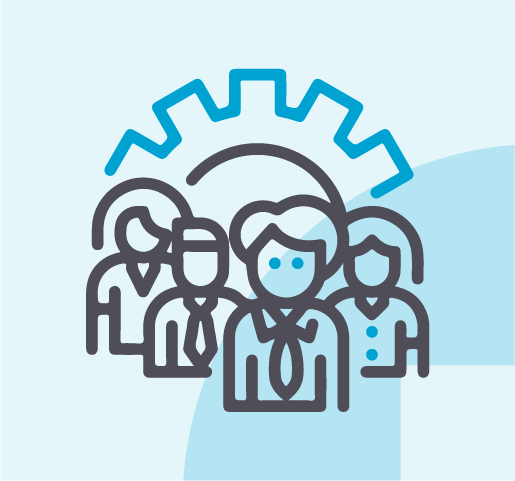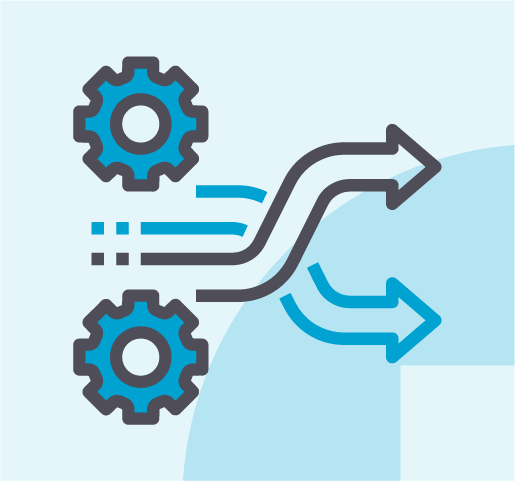With the rise in cybercrimes, integrating security protocols throughout the application’s life cycle has become more important than ever. Developing a secure application that fulfils the user’s requirements has always been the biggest challenge for advanced and modern organisations.
According to Security Boulevard, more than 52% of companies sacrifice cybersecurity due to fear of lagging in the competitive market in terms of speed. This is the reason it is important to adopt DevSecOps and integrate security practices into the software development process from the get-go
The DevOps approach will conquer the software development field sooner or later. However, in the implementation of DevSecOps, several organizations encounter a common set of obstacles. There are around 71% of companies who think their security team lacks adequate working knowledge of DevSecOps practices. But, these kinds of worries can easily be solved through the DevSecOps maturity model.
The DevSecOps maturity model creates a roadmap for the implementation of DevSecOps across the organization. Four transformational stages come under this maturity model- beginner, intermediate, advanced, and expert.
Keep reading this comprehensive guide to learn the following:
- Know about DevSecOps maturity
- Benefits of using DevSecOps maturity model
- Four transformation stages of DevSecOps maturity model
- Conclusion
RELATED COURSE
Understanding DevSecOps
If you can't see your organization on the maturity model, this is the course for you! Develop a DevSecOps mindset the right way! ⭐
Assess DevSecOps Maturity
The DevSecOps maturity model is a structured framework used by organizations to evaluate their current level of maturity and to prioritize the various elements of DevSecOps for better application security. Previously, development teams and security teams faced difficulty in assessing their progress and determining the steps they are required to reach the next maturity level. This maturity model solves their problem.
The DevSecOps maturity model helps organizations carry out the self-assessment of ongoing security practices, highlights the target state of application security activities, and determines the maturity level of each domain. With the help of this model, organizations are able to deliver reliable, secure, and quality software.
Benefits of Using the Maturity Model
DevSecOps is a new practice, and many organizations are still on the way to reaching maturity throughout their processes. According to these statistics, 30% of organizations have fully implemented the DevSecOps maturity model and are enjoying its benefits. Let’s have a look at some of the benefits you will get by just shifting towards DevSecOps maturity:
- Boosts the overall workflow of the organization
- Increases the release frequency
- Improves the security posture of an organization
- Decreases time-to-market
- Increases quality and operational performance
- Boosts delivery speed
- Helps you identify areas of improvement and future scope
Despite these benefits, some organizations still fear incorporating the DevSecOps approach as they worry integrating security will slow down the development process. However, it has been revealed by this ESG report that this approach actually accelerates code deployment by improving collaboration across teams.


Four Transformation Stages of a DevSecOps Maturity Model
It goes without saying that implementing DevSecOps can be challenging. The effective moving to DevSecOps needs a proper transition through a maturity model. The transformation stages of the maturity model enable the organization to evaluate their progress or level in achieving maturity during DevSecOps implementation. With this, the organization can improve and redefine its approaches.
The DevSecOps maturity model helps you figure out where you're at on the DevSecOps path and what areas you need to improve to go to the next level of maturity. Take a look at the four stages of maturity:
Beginner
In the beginner stage of the model, the organization needs to do everything manually, including creating, developing, and maintaining the applications. It means that everything needs to be done perfectly as most of the applications cannot be patched easily.
Intermediate
To move to the intermediate stage from the beginner stage, you need to create an application assembly line rather than doing everything manually. In the application assembly line, a code helps to secure products. In this stage, development, security and operation teams work together to know the requirements to achieve a secure code.
The goal of this stage is to automate everything. It can be done by implementing everything as code. It includes compliance as code, infrastructure as code, and security as code. It enables you to achieve audibility and consistency. It also makes it simple for the team to collaborate across the organization.
Once you automate everything, the next thing is to standardize the tools like GitLab, Tekton, and Jenkins. As everything is codified, you can easily build up an application from the start with code.
Advanced
In the advanced stage, the organization needs to implement DevSecOps at scale. It can be done by improving the processes like patch management, configuration management, and compliance. The process can be made better by scaling down existing automation and using cloud services like public cloud services. Cloud technologies make the DevSecOps application assembly line efficient and faster, with the help of which you can deploy the software at scale.
Expert
Let’s face it, reaching the expert stage of the maturity model can be a daunting task. Nonetheless, organizations can reach the expert stage of the maturity model by adopting the best practices developed by tech giants like Google and Netflix. Here, everything is API-first in the cloud-native world.
These organizations have fully automated development practices with which you can boost the deployment frequency, reduce the development cycle, and make the delivery practices continuous. They use leveraged technology models like serverless and microservices. To make better decisions related to application and security development, they are taking the help of machine learning and artificial intelligence.
Takeaway
Moving your organization to DevSecOps from DevOps can be a challenging project. DevSecOps is not a one-size-fits-all solution suitable for all types of organizations. It requires proper planning to implement DevSecOps in an organization. With the DevSecOps maturity model, you can do it easily.
The DevSecOps maturity model offers a roadmap for implementing application security practices in organizations. If you want to reach the next level of maturity, you must develop activities required for that particular level. Moving through the DevSecOps maturity model is not easy, but it is worth achieving the next stage. Every step you take closer to application development with security at the start of SDLC enables you to fulfil your organization's goals.
Hopefully, this blog provided tips and tricks for creating a roadmap for implementing DevSecOps across the organization using the maturity model. Here at Everable, we offer a wide range of courses including DevSecOps labs and assessments where you can practically apply your knowledge and assess your organisation's level. Here you'll get help to kick-start your DevSecOps journey and achieve DevSecOps maturity.
Conversely, book a demo call with our team members so we can evaluate what it is you need.
